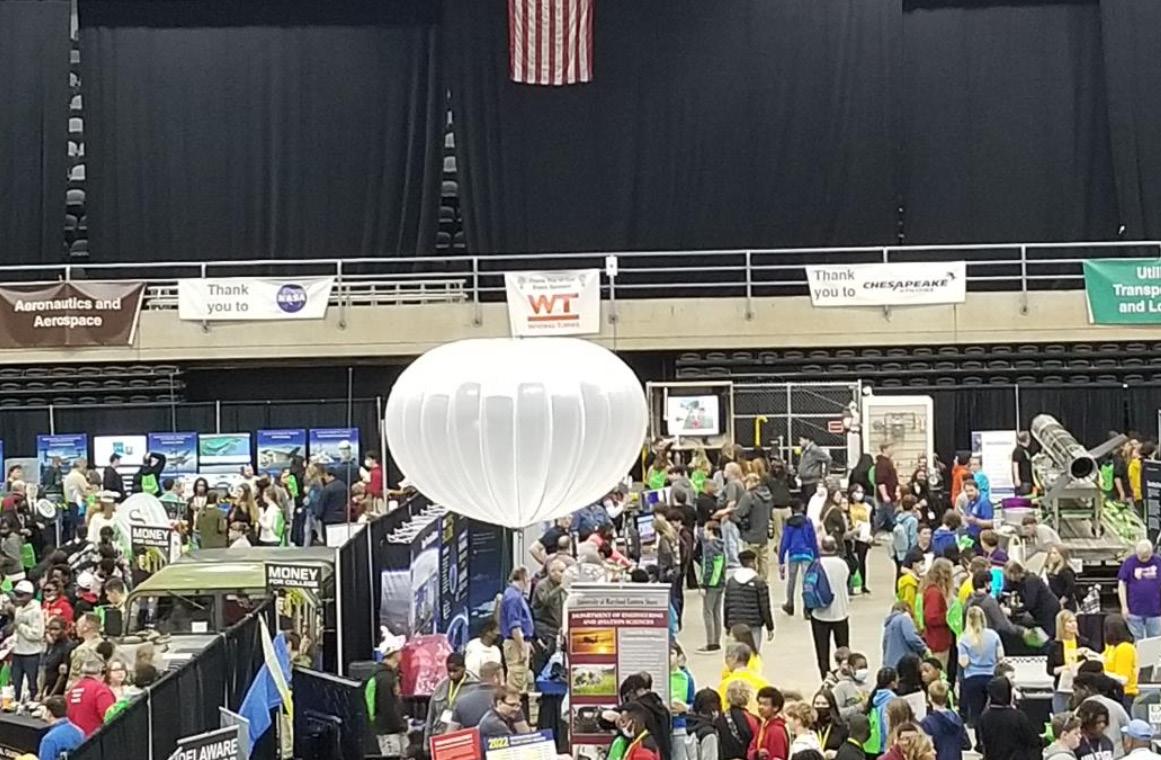
3 minute read
HUMAN EXPLORATION
ARTEMIS AND BEYOND
SUPPORTING THE NEW ERA OF HUMAN SPACEFLIGHT
Dating back to its beginnings, NASA’s Goddard Space Flight Center has supported the agency’s human spaceflight endeavors, from Project Mercury and the Apollo missions to the Space Shuttle Program and today’s International Space Station expeditions. The center remains vital to NASA’s human exploration initiatives, including the recent missions of the Commercial Crew Program and the upcoming Artemis missions, which will send the first woman and first person of color to the Moon in preparation for eventually sending humans to Mars.
Scientific Research
Planetary Science
Data products from the Lunar Reconnaissance Orbiter, including high-resolution images and topographic maps, have helped identify Artemis science objectives as well as 13 candidate landing regions near the lunar south pole for Artemis III, which will be the first crewed Artemis mission landing on the lunar surface and will feature the first woman to set foot on the Moon. Goddard scientists are active in the lab and field, the results of which provide valuable input to the design of new science instruments, as well as hardware and strategies to be used by astronauts. Scientists have also received 50-year-old lunar samples from the Apollo 17 missions, and they will study the samples to help NASA better understand the Moon in advance of upcoming missions.


Space Weather Research
Goddard heliophysics missions provide detailed data about the space environment and radiation encircling the Sun, Earth, and Moon. This helps scientists model conditions of the very space we travel through, which helps keep astronauts, instruments, and spacecraft safe from harsh environments. Goddard is also building one of the first instrument suites, HERMES, for the lunar Gateway to enhance our ability to forecast space weather. The recently established Moon to Mars Space Weather Analysis Office will also provide novel capabilities in characterizing the space radiation environment.
In-space Servicing, Assembly, and Manufacturing
Goddard is developing servicing technologies that are critical to sustainable human exploration. The capabilities will allow spacecraft to live longer and journey farther. We also develop important tools that help enable a sustained human presence in space. From astronaut tools for instrument repairs to robotic tools for leak detection and other operations, we ensure NASA has the right tools to maintain astronaut habitats in space. Currently used aboard the International Space Station, these tools can be applied to future exploration missions and human habitats on the Moon, Mars, and beyond.
Space Communications and Navigation
Communications Services
Goddard’s communications and navigation community oversees NASA’s Near Space Network, which provides critical services to missions within 2 million kilometers of Earth through a blend of government and commercial providers. The network supports demonstrations, human spaceflight, science, and robotic missions, giving them the essential services they need for tracking, telemetry, and control, as well as for returning data to Earth for investigation and discovery. The network, along with the new commercialization office, is embracing the agency’s goal for increased commercialization, enabling a robust communications and navigation marketplace.
Navigation Services
Goddard’s Flight Dynamics Facility provides missions with comprehensive and reliable navigation services. The facility uses tracking data to ensure the success and safety of a variety of missions, including those in human spaceflight. In the unlikely event of a launch abort, the facility has developed new tools, software, and operations concepts to ensure missions stay connected to mission operations centers on Earth. Navigation experts are also designing the satellite navigation systems and architectures of the future while serving as navigation experts on the international stage.
Search and Rescue
For the international satelliteaided search and rescue effort, Goddard’s Search and Rescue office develops emergency beacons and the flight and ground systems that support them. These technologies support Earth-based search and rescue, as well as astronaut safety. The office is currently testing critical distress beacon technologies for Artemis contingency operations.










